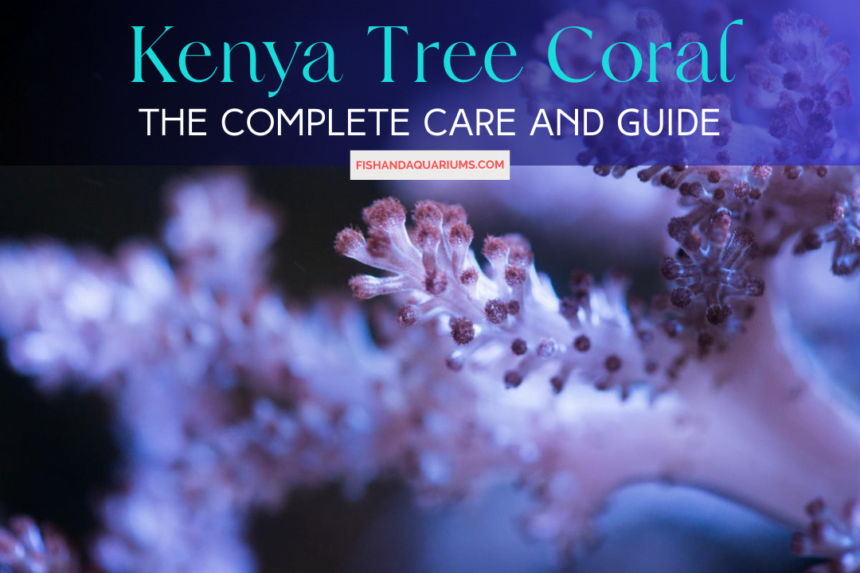Introduction
Welcome to the fascinating world of Kenya Tree Corals, a stunning addition to any saltwater aquarium. In this guide, we’ll dive deep into the care and maintenance of these unique corals, exploring why they are a must-have for enthusiasts like you.
Welcome to the Fascinating World of Kenya Tree Corals
Imagine an underwater paradise in your own home, where vibrant colors dance gracefully beneath the surface. That’s the magic Kenya Tree Corals brings to your saltwater aquarium. With its distinctive green and pink varieties, this corals is like a living work of art swaying to the rhythm of the ocean.
Why Kenya Tree Corals Is a Must-Have in Your Saltwater Aquarium
Isn’t just another pretty face in the marine world. It offers numerous benefits that make it a valuable addition to your aquatic ecosystem. Its hardy nature and adaptability make it an excellent choice for both beginners and experienced aquarists. Plus, its graceful, tree-like structure adds a touch of elegance to your tank.

Getting to Know Kenya Tree Coral
To embark on a successful journey caring for Kenya Tree Coral, it’s essential to get to know these remarkable marine organisms. Let’s dive into the basics of what makes Kenya Tree Coral a captivating addition to your saltwater aquarium.
What is Kenya Tree Coral?
Kenya Tree Coral, scientifically known as Capnella sp., is a mesmerizing soft coral species that belongs to the Nephtheidae family. This coral derives its name from its tree-like appearance, with branches resembling the limbs of a tree swaying gently in the ocean currents. Its natural habitat spans the warm waters of the Indo-Pacific region, where it thrives in the wild.
The Unique Characteristics of Kenya Tree Coral
One of the standout features of Kenya Tree Coral is its vibrant coloration. It comes in various shades, including green and pink. These stunning hues add a burst of life and elegance to your saltwater aquarium. Beyond its visual appeal, Kenya Tree Coral exhibits unique characteristics like flexibility in its branches, which gracefully sway in the water, mimicking the movement of underwater trees.
| Name (Common, Scientific) | Kenya tree, cauliflower soft coral, Capnella sp. |
| Origin | Indo-Pacific |
| Minimum tank size | 10 gallons (37.9 L) |
| Temperature | 73-84 °F |
| Salinity | 1.023-1.025 |
| pH | 8.1-8.4 |
| Difficulty level | Easy |
| Temperament | Semi-aggressive |
| dkH | 8-12 |
Varieties of Kenya Tree Coral
To showcases its diversity through different color variations, with green and pink being the most popular. The green Kenya Tree Coral (Capnella gaboensis) boasts a lush, verdant shade, while the pink Kenya Tree Coral (Capnella sp. pink) exhibits a delicate, rosy hue. Each variety carries its own charm, allowing you to choose the one that complements your aquarium’s aesthetic.
Whether you’re drawn to the vibrant green or the soft allure of pink, Kenya Tree Coral has a place in your saltwater aquarium. In the upcoming sections, we’ll explore how to create the ideal environment for these captivating corals and ensure their thriving presence in your underwater world.

Preparing Your Tank for Kenya Tree Coral
It’s time to delve into the essential steps of preparing your saltwater aquarium to welcome these captivating corals. Proper preparation ensures a thriving environment for your new coral companions.
Firstly, Acquire the Right Equipment
Before introducing Kenya Tree Coral to your tank, it’s crucial to have the proper equipment in place. Invest in a reliable protein skimmer, high-quality lighting, and an efficient filtration system. These components are essential for maintaining water quality and providing the optimal conditions that Kenya Tree Coral requires to flourish.
Create Stable Water Parameters
Kenya Tree Coral is particularly sensitive to fluctuations in water parameters. To ensure their well-being, maintain stable conditions in your tank. Regularly monitor temperature, salinity, and pH levels. Invest in a good-quality hydrometer and thermometer to keep a close eye on these critical factors.
Adjust Lighting Appropriately
Lighting plays a vital role in the growth and health of Kenya Tree Coral. These corals thrive under moderate to high-intensity lighting. Invest in LED lighting systems that can be adjusted to simulate the natural light patterns found in their native habitat. Ensure a consistent lighting schedule, providing your corals with a day-night cycle.
Positioning in Your Tank
Consider the placement within your aquarium carefully. These corals appreciate moderate water flow and gentle swaying. Position them where they can catch some of the water movement while avoiding strong direct currents that may harm their delicate branches.
Avoid Overcrowding
While it’s tempting to fill your tank with various coral species, overcrowding can lead to unhealthy competition for space and resources. Give your Kenya Tree Coral ample room to spread its branches and thrive. Adequate spacing ensures they can grow freely and exhibit their tree-like charm.
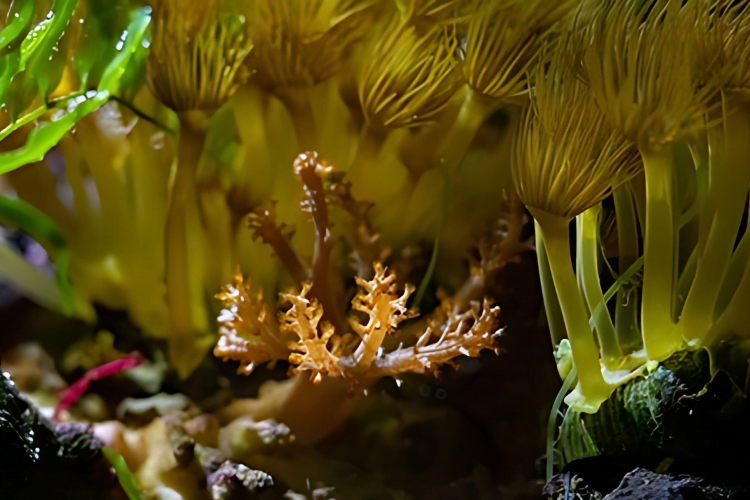
Lighting Requirements for Kenya Tree Coral
Now that you’ve prepared your tank for Kenya Tree Coral, it’s time to shed light on one of the most critical aspects of their care – proper lighting. These corals have specific lighting needs that, when met, will ensure their vibrant health and stunning appearance.
Choosing the Right Lighting System
When it comes to lighting, LED (Light Emitting Diode) systems are your best bet. These modern lighting fixtures provide the intensity and spectrum necessary to support the growth and coloration of your corals. Opt for LED systems that offer adjustable settings, allowing you to fine-tune the lighting to mimic their natural habitat.
Understanding Light Intensity
Kenya Tree Coral thrives under moderate to high-intensity lighting. In their natural environment, they receive ample sunlight in shallow waters. To replicate this, position your LED lights accordingly. Start with lower intensity and gradually increase it as your corals acclimate. Monitoring their response will help you determine the optimal intensity for their well-being.
Maintaining a Consistent Lighting Schedule
Consistency is key when it comes to lighting. Establish a regular lighting schedule to provide your corals with a day-night cycle. Aim for approximately 10-12 hours of light per day, allowing them to photosynthesize and grow while also giving them the rest they need during the night.
Avoiding Light Stress
While Kenya Tree Coral thrives under proper lighting, it’s crucial to avoid subjecting them to excessive light stress. Too much light can lead to bleaching and damage. If you notice signs of stress, such as the coral retracting its polyps, adjust the lighting intensity immediately to provide relief.
Consider Light Placement
Proper placement of your LED lights is essential. Ensure that they are positioned to cover the entire tank evenly, preventing shadows or dark spots. This uniform lighting distribution ensures that every branch of your Kenya Tree Coral receives the light it needs for healthy growth.
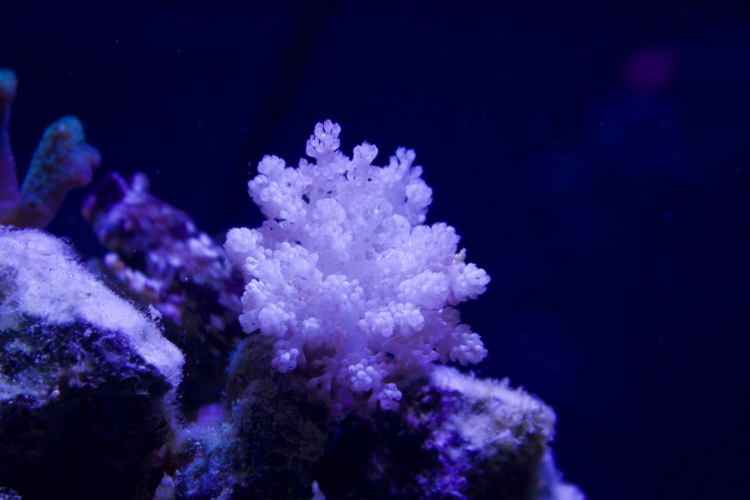
Acquiring Kenya Tree Coral
Let’s explore the essential steps for acquiring these exquisite corals for your saltwater aquarium. Finding healthy specimens and introducing them to your tank is a crucial phase in your coral-keeping journey.
Buying Healthy Kenya Tree Coral Specimens
The first rule is to prioritize quality over quantity. Look for reputable suppliers who specialize in coral sales. Seek out vendors with a track record of providing healthy and sustainably sourced corals. Green Kenya Tree Coral and pink Kenya Tree Coral are often available, so choose the variety that captivates you the most.
Inspecting Coral Health
Before making a purchase, carefully inspect the health of the coral specimens. Healthy Kenya Tree Coral should display vibrant colors, extended polyps, and no signs of damage or disease. Avoid corals with closed or retracted polyps, as this may indicate stress or illness.
Quarantine and Acclimation Procedures
It’s essential to quarantine them before introducing them to your main tank. Quarantine helps prevent potential diseases or pests from entering your established aquarium. Provide a separate, well-maintained environment for the new arrivals and monitor them closely for several weeks.
Gradual Acclimation
Once your corals have successfully completed the quarantine period, it’s time for a gradual acclimation process. This involves slowly introducing them to the main tank environment to reduce stress and help them adapt to new conditions. Gradually adjust parameters such as lighting and water flow to match their needs.

Placement and Positioning
Now that you’ve acquired healthy Kenya Tree Coral specimens, the next step in their care is to find the perfect spot within your saltwater aquarium. Proper placement and positioning play a crucial role in ensuring the well-being and growth of these captivating corals.
Finding the Perfect Spot in Your Aquarium
Selecting the right location for your Kenya Tree Coral is a thoughtful process. These corals thrive in moderate water flow, so look for areas in your tank where the water movement is gentle to moderate. Avoid placing them in direct paths of strong currents, as this can damage their delicate branches.
Kenya Tree Coral and Tankmates
Consider the compatibility of Kenya Tree Coral with other inhabitants of your aquarium. While they generally coexist well with a variety of fish and invertebrates, it’s essential to research and choose tankmates that won’t harm or stress your corals. Peaceful fish and invertebrates make suitable companions for these graceful corals.
Avoiding Overcrowding Issues
While it’s tempting to create a densely populated, visually stunning aquarium, overcrowding can be detrimental to Kenya Tree Coral and other tank inhabitants. Ensure there is ample space between corals to allow for healthy growth and prevent physical contact, which can lead to damage or aggression between corals.
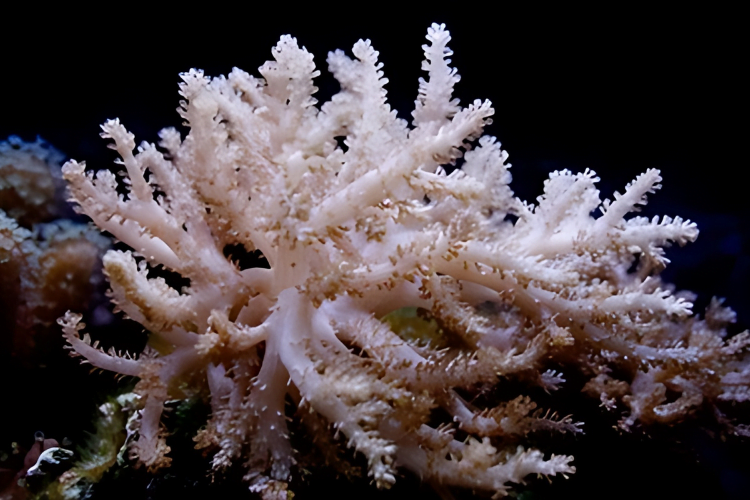
Feeding and Nutrition
We now turn our attention to their feeding and nutritional needs. Understanding how to nourish these beautiful corals is essential to their vibrant growth and well-being.
The Nutritional Needs of Kenya Tree Coral
Kenya Tree Coral falls into the category of photosynthetic corals, which means they derive a significant portion of their nutrients from photosynthesis. To support this process, ensure your corals receive adequate lighting, as we discussed earlier. However, they also benefit from supplemental feedings.
Feeding Strategies for Optimal Growth
While Kenya Tree Coral primarily relies on photosynthesis, they can capture small particles and planktonic organisms from the water. To enhance their growth and coloration, you can offer them tiny marine foods, such as phytoplankton and zooplankton. Use a specialized coral feeding tool or a turkey baster to target-feed individual polyps. Feeding should be done sparingly, typically once a week, to avoid overfeeding and water quality issues.
Common Feeding Mistakes to Avoid
Overfeeding can lead to excess nutrient buildup in your aquarium, which can harm both the corals and other tank inhabitants. Pay close attention to their response after feedings; if polyps remain extended and vibrant, you’re on the right track. If they retract or show signs of stress, reduce the feeding frequency.
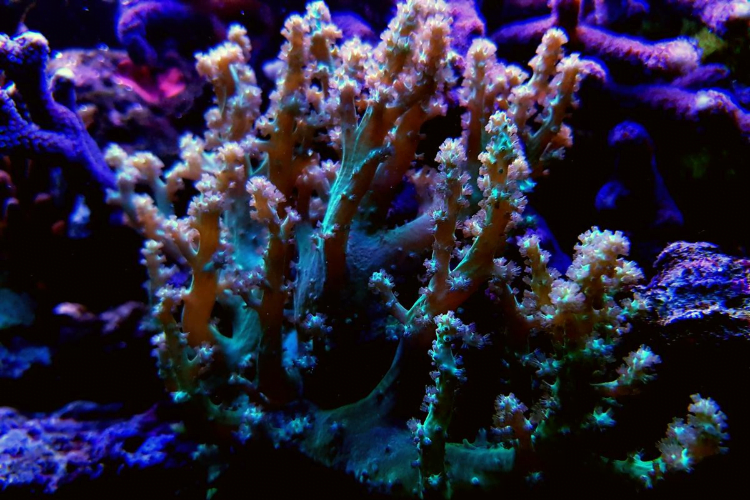
Water Quality and Maintenance
In our ongoing quest to provide top-notch care for Kenya Tree Corals, maintaining pristine water quality takes center stage. The health and vibrancy of these captivating corals are directly tied to the conditions of their aquatic home.
Maintaining Water Parameters for Kenya Tree Coral
Consistency is key when it comes to water quality. Regularly monitor essential parameters such as temperature, salinity, and pH levels. Kenya Tree Corals thrives in stable conditions, so fluctuations can stress them. Invest in reliable testing kits to ensure your aquarium’s water remains within the ideal range for these corals.
Regular Water Changes and Filtration
To keep water quality at its best, schedule routine water changes. Replacing a portion of your tank water every few weeks helps remove accumulated pollutants and replenishes essential trace elements. Additionally, invest in quality filtration systems to remove debris and maintain water clarity. Mechanical and biological filtration can significantly benefit your coral’s habitat.
Algae and Pest Control Around Kenya Tree Coral
Algae growth and unwanted pests can pose challenges to your Kenya Tree Coral’s health. Regularly clean the glass and substrate to prevent excessive algae buildup. Be cautious when introducing new corals, as they can carry potential pests. Quarantine and inspect new additions before introducing them to your main tank to avoid contamination.
By meticulously maintaining water quality and implementing effective filtration and maintenance routines, you’ll create a stable and healthy environment for your Kenya Tree Coral to thrive. In the following sections, we’ll explore the growth and propagation of these corals, as well as how to troubleshoot common issues that may arise in your aquarium.
Growth and Propagation
As your journey in caring continues, it’s essential to understand the intricacies of their growth and propagation. This knowledge will not only help you maintain a thriving coral colony but also potentially share the beauty with fellow enthusiasts.
Understanding Kenya Tree Coral Reproduction
It has a unique method of reproduction called “budding.” This means they can produce new coral polyps from their existing branches. When conditions are favorable, you may notice small, genetically identical polyps growing alongside the parent coral. This natural process contributes to the expansion of your coral colony.
Encouraging Growth and Propagation in Captivity
To encourage the growth and propagation of Kenya Tree Coral in your aquarium, it’s crucial to provide ideal conditions. Ensure stable water parameters, appropriate lighting, and consistent feeding. Adequate spacing between individual corals also promotes their branching and budding process. As your corals mature, you’ll witness the gradual expansion of your coral colony.
Challenges and Solutions
While Kenya Tree Coral is relatively hardy, they can face challenges that hinder their growth and propagation. These challenges include suboptimal water conditions, physical damage, or the presence of pests. Regularly monitor your corals for signs of stress or disease and take swift action if issues arise. Isolating affected corals in a quarantine tank can prevent further complications.
Common Issues and Troubleshooting
It’s essential to be prepared for potential challenges that may arise. Understanding common issues and knowing how to troubleshoot them will help ensure the continued health and vibrancy of your coral colony.
Identifying and Treating Kenya Tree Coral Problems
While hardy, can still face issues such as tissue recession, bleaching, or the presence of unwanted pests. Regularly inspect your corals for any signs of stress or disease. If you notice discoloration, retracted polyps, or unusual growths, act promptly. Isolate affected corals in a quarantine tank to prevent the issue from spreading to the entire colony.
Dealing with Pests and Diseases
One of the most common challenges in coral keeping is the presence of pests and diseases. Keep a vigilant eye out for signs of coral-eating pests such as flatworms or nudibranchs. If you suspect an infestation, remove affected corals and employ appropriate treatments. Additionally, maintain excellent water quality to reduce the risk of diseases affecting your corals.
Reviving a Stressed Kenya Tree Coral
Stress can occasionally affect Kenya Tree Coral due to changes in water parameters, lighting, or other environmental factors. If you notice your corals retracting their polyps or appearing less vibrant, take steps to identify and rectify the cause. Adjust lighting, water flow, and feeding as needed, and monitor their response. Often, with the right care, stressed corals can recover and thrive once again.
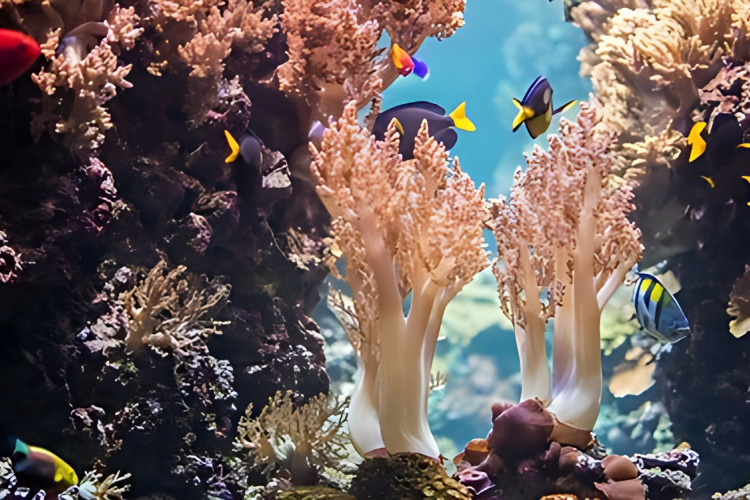
Coral Compatibility
When creating a harmonious and thriving underwater world in your saltwater aquarium, considering coral compatibility is essential. Kenya Tree Coral, with its unique characteristics, can coexist with a variety of other coral species and tankmates, contributing to the beauty and diversity of your aquatic ecosystem.
Kenya Tree Coral and Other Coral Species
Its known for its peaceful nature, making it an excellent addition to a reef tank. They can cohabitate with a wide range of other soft and stony coral species without aggressive interactions. However, ensure that you provide adequate spacing between different corals to prevent overcrowding and competition for space and resources.
Safe Neighbors in Your Aquarium
Beyond coral compatibility, it’s vital to choose tankmates that won’t pose a threat to your Kenya Tree Coral. Peaceful fish and invertebrates, such as clownfish, gobies, and various shrimp species, can make ideal companions. Ensure that the temperament and feeding habits of potential tankmates align with the needs of your coral colony.
By carefully selecting coral species and tankmates that are compatible with Kenya Tree Coral, you’ll create a thriving and visually stunning aquatic community. In the upcoming sections, we’ll explore the creative aspects of incorporating Kenya Tree Coral into your aquascape and discuss the importance of ethical practices and conservation efforts in the world of coral keeping.
Expert Insights and Tips
Gaining insights from experienced reef keepers can be invaluable in your journey to master the care of Kenya Tree Coral. These experts have gathered a wealth of knowledge through their years of experience and can provide valuable tips and advice to help you achieve success in coral keeping.
Advice from Experienced Reef Keepers
One of the most valuable sources of information is experienced reef keepers who have successfully cared for Kenya Tree Coral. They can offer guidance on everything from maintaining stable water parameters to optimizing lighting and feeding schedules. Connecting with fellow enthusiasts through online forums or local reef-keeping clubs is an excellent way to tap into this collective wisdom.
Advanced Techniques for Kenya Tree Coral Enthusiasts
For those who are looking to take their Kenya Tree Corals care to the next level, there are advanced techniques that can further enhance the health and beauty of your corals. These may include specialized lighting setups, nutrient dosing, and more precise water parameter control. However, it’s essential to approach these techniques with caution and thorough research, as they can be complex and require careful monitoring.
Continual Learning and Adaptation
Coral keeping is a dynamic hobby, and there is always more to learn. Stay open to new ideas and techniques, and be willing to adapt your care routine based on the specific needs of your Kenya Tree Coral colony. Regularly seeking out expert insights and staying informed about the latest developments in the hobby will contribute to your success as a coral enthusiast.
By tapping into the knowledge and experience of seasoned reef keepers and exploring advanced techniques, you’ll be better equipped to provide the best possible care for your Kenya Tree Coral. In the upcoming sections, we’ll delve into the practical aspects of creating stunning aquascapes with these corals and explore the critical topic of sustainability and conservation in coral keeping.
You May Also Read:
FAQ’s
Green Kenya Tree Corals and pink Kenya Tree Corals are both stunning varieties of Capnella, but they have distinct colorations. The green variety boasts a lush, verdant hue, while the pink variety exhibits a delicate rosy color. The choice between them largely depends on your aesthetic preferences, as their care requirements are quite similar.
Where Can I Find Kenya Tree Corals for Sale?
You can often find Kenya Tree Corals for sale at reputable local fish stores, online corals vendors, or through fellow hobbyists. Ensure that you source your corals from trustworthy suppliers who prioritize ethical and sustainable practices to support the health of coral reefs in the wild.
How Do I Prevent Kenya Tree Corals from Overgrowing in My Tank?
Kenya Tree Corals have a tendency to grow quickly and can sometimes overtake your aquarium if not managed. To prevent overgrowth, provide adequate spacing between individual corals, trim or frag them when necessary, and maintain stable water parameters to control their growth rate.
Can I Keep Kenya Tree Corals with Other Coral Species?
Yes, Kenya Tree Corals are generally peaceful and can coexist with a variety of soft and stony coral species in a reef tank. However, ensure that you provide enough space between different corals to prevent overcrowding and competition for resources.
Conclusion
As we come to the end of our comprehensive guide on the care and keeping of Kenya Tree Coral, it’s time to reflect on the incredible journey you’ve embarked upon in the world of coral keeping. With newfound knowledge and a passion for these captivating corals, you’re well-equipped to create a thriving and vibrant underwater paradise in your saltwater aquarium.
Embracing the Beauty of Kenya Tree Coral
Kenya Tree Coral, with its tree-like branches swaying gracefully in the currents, brings a touch of the ocean’s elegance to your home. Whether you choose the lush green variety or the delicate pink, these corals are a testament to the wonders of nature and the diversity of life found in our planet’s seas.
The Joy of Coral Keeping
Coral keeping is not just a hobby; it’s a journey of discovery and stewardship. By providing the ideal conditions for your Kenya Tree Coral colony to thrive, you become a custodian of these fragile ecosystems. Your commitment to ethical and sustainable practices can make a meaningful impact on the conservation of coral reefs worldwide.
A World of Possibilities
As you continue your coral-keeping adventure, remember that there is always more to learn and explore. You have the opportunity to experiment with aquascaping, connect with fellow enthusiasts, and contribute to coral conservation efforts. The possibilities are as vast and diverse as the coral reefs themselves.
A Sustainable Future for Coral Keeping
Sustainability is at the heart of responsible coral keeping. By choosing sustainably sourced corals, practicing ethical care, and supporting conservation initiatives, you’re not only ensuring the well-being of your corals but also helping to protect their counterparts in the wild. Together, we can work towards a future where coral reefs continue to thrive.
In closing, we hope this guide has provided you with valuable insights, tips, and inspiration to embark on a fulfilling and responsible journey of Kenya Tree Corals care. May your saltwater aquarium be a source of wonder and joy, and may your commitment to sustainability contribute to the preservation of these remarkable ecosystems for generations to come.


